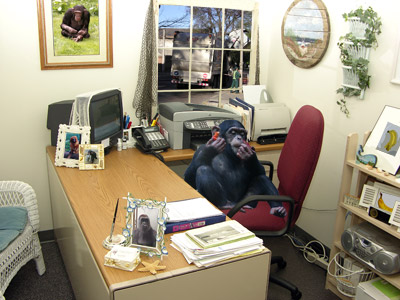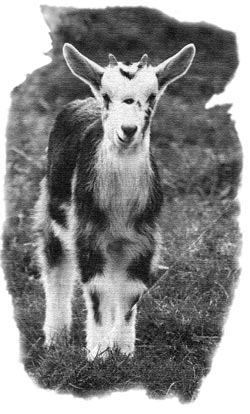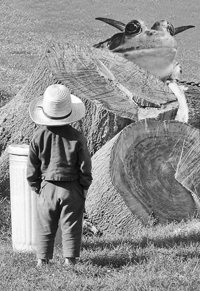(And the Humans That Quite Often Exploit Them)
An exhaustively-researched project by Matt Hohnstein
With Foreword by Renowned Animal Historian Max Power
When Matt asked me to write this foreword, I was happy that the general public would finally have access to this material. Our studies on what Matt calls “extraordinary animals” have been long ignored by the history community and it is finally nice to have a small collection of these events in one place.
Throughout the ages, humankind has regaled itself with the histories and extraordinary deeds of its own extraordinary members. However, due primarily to sheer human ignorance, the history of extraordinary animals has been unfairly neglected throughout the ages – many extraordinary animals being forgotten altogether. Our children have read numerous fictitious tales of history such as George Washington and the cherry tree, Paul Bunyan, Johnny Appleseed, or the war of 1812 but not the heartbreaking tale of Barney the mule or the free-spirited McGillicutty the fish. With great animal pride, a brief historical overview of these animals is to be presented here, perhaps for the very first time in a history text.
 -Max Power, Animal Historian
Petroleum University
Kentucky, USA
28 February, 2006 |
Most history buffs will remember Incitatus, Roman Emperor Caligula’s steed that was appointed to the Roman Senate. Incitatus was the first of many political horses to come.
In 1999, Dandy Dan, a horse from Illinois, was appointed to the Chicago city council after a series of scandals involving several of its members and a bizarre election. With nobody on the ballot, a thirteen year-old boy nominated his father’s horse. As the only choice on the ballot, Dandy Dan made it into the city council by a landslide and served his position until 2003 when he lost his re-election campaign to his only opponent, an iguana that was entered as a joke by the staff of a small reptile specialty store. Despite their appointments to political positions, it has yet to be determined whether or not horses or iguanas are effective leaders.
 |
Alan, a political chimpanzee, sits in his office and enjoys some food. Alan was once the mayor of Fizzlebottom, Maine between 2000 and 2004. Alan left politics to pursue his dream of managing a Burger King restaurant in Fizzlebottom, which he has owned and operated since 2005.
Photo courtesy of Alan the Chimpanzee, 2006. |
It is fairly obscure knowledge to most of the world but according to the Guinness Book of World Records, in 1988 a chimpanzee named Tião was a political candidate in a Brazilian mayoral election and went on to receive a whopping 400,000 votes (Guinness). However, 1980 was actually the biggest year for primates running for political offices worldwide but their stories are vastly ignored by political historians as the fact that primates other than human beings running for political offices is highly humiliating.
Most people today would not remember the candidate for the American “Banana Party” in the 1980 election, chimpanzee named Sammy. The now long-forgotten, Banana Party stressed that humans are not the only sentient beings on the planet and thus for a true democracy to exist, it should represent all sentient beings–including apes. Despite Sammy’s successes in Florida and Rhode Island, Sammy and the Banana Party quit the race and never returned again after a disastrous incident during the Sammy/Reagan debate.
Two spider monkeys, Machu and Pichu, were also contenders for the school board election in New York City in 1980. Neither one was elected, but they were given adorable little hats as a parting gift from the city of New York.
The phenomenon of political primates was not constrained to the United States during the 1980’s – Australia saw several orangutans in elections as well. Briefly in 1981, a chimpanzee named Bongo was the British transport secretary, but due to public outcry, she was promptly deposed.
|
The Escaping Sticks (Winter, 1720)
 |
This is digital illustrator Vance Octagon’s concept of a frozen snake.
Image courtesy of Vance Octagon. |
The winter of 1820 had been especially harsh upon a poor rural Russian family: starvation was a daily happening and their son had died from hypothermia. Even firewood was a scare commodity for the out-of-luck family until one afternoon when a surviving male child found dozens of frozen sticks scattered throughout the land behind the family shack.
The boy decided that he would surprise his family and bring the sticks inside so that later in the evening, the family would be able to warm themselves up for the first time in ages by starting a roaring fire. Upon gathering the sticks, the boy discovered that they were far too frozen and covered with ice to be used as firewood and needed to be thawed first, so he brought them into the shack for his mother to warm up over the stove.
When his younger sister complained of a stick biting her leg not even thirty minutes later, he discovered to his own dismay a slithering heap of slightly frostbitten, but now successfully-thawed, orange snakes creeping about the kitchen. Fortunately for the little girl, the snakes were not poisonous but they were very cold, soggy, and unpleasant. It is debatable whether or not other species of snakes can withstand suspended animation within ice, but several varieties of snakes have been proven time and again to withstand up to three weeks under suspended animation, so long as they are digesting prey (Waanders).
|
Triclops, The Space Goat (August 25, 1835) On August 25, 1835, the New York Sun newspaper reported that fantastic animal and humanoid life had been discovered on the moon, which set the lips of the readers of the Sun on fire. “Was there really life on the moon?” “What was it like?” “Can we meet a Moon-Man?” “Can we buy moon livestock?”
 |
|
Rare archival photo of a triclopic goat named Figs, taken by Mortimer Jensen, 28 August 1935.
Photo courtesy of the Frank Green “Great Goats Photography Archive." |
Goat rancher Phineas Abramson had been facing economic problems because the market on goats had been steadily dropping since 1830. The news of the moon animals couldn’t have been timed any better than it was, as a tricloptic (three-eyed) goat had been born just two days earlier on his ranch. Abramson then concocted a plan: to pass the tricloptic goat off as a moon goat. Before the sun had set, the tricloptic goat had a pink stripe painted across its back and a sign reading “See the fantastic Moon Goat!” had been constructed and hung in town.
The following day, Buffalo citizens flocked to see “Triclops: the Space Goat.” The claim of possessing a goat from the moon was a bold statement to make, so Abramson explained to his fellow skeptic New Yorkers that his brother had found a rock in the country and inside it was a baby three-eyed goat with a bizarre pink marking. With the article in the paper and a bizarre mutant goat in their presence, the townsfolk were none the wiser.Word of the moon animals spread further throughout the country and visitors from far and wide flocked to see the famed alien creature of Buffalo, New York. A few weeks later when the Sun published that the stories of moon life had been fraudulent, Abramson had already fled town with over four thousand dollars in profits. Phineas Abramson was never heard from again and it is doubtful that Triclops survived his exodus due to the limited lifespans associated with cyclopia and triclopia.
|
Goliath Grain Frogs (Rana Gigantica) (1844-1846)
 |
|
A child stands near a rana gigantica in this rare photograph from 1948 during the brief resurgence of ranas. This photograph is currently on display in the traveling “Famous Frogs of America” photography show. |
A common problem in the fall of 1844 among grain farmers in the Midwest region of the United States was the epidemic of horse fever, which affected eight of ten workhorses causing many farming operations to fail. Farmer Mead Green found a solution to this problem: harnessing sowing carts to the back of the enormous rana gigantica frogs that were indigenous to the region.
Mead’s system was the first of its kind: in the evening, he wound sprinkle dried crickets on his porch and come midnight, the rana gigantica frogs would congregate to eat them. Green then would hitch the carts to the giant frogs and allow them to hop around his field, seeds falling out and into the soil. Come harvest time, the service of the ranas would be employed again in a similar fashion.
Rana gigantica, or "Giant Frogs," were indigenous to the midwest region of the United States prior to their disappearance in the late 1800s. They were characterized by their massive size -- in many cases, being the size of an ox. They were also characterized by two pointed horns that grew from the top of their head.
|
The Flapjacker’s Worm (April 27th, 1900)
 |
| “Worm and Birds” by Leroy Gunderson. 1971. Acrylics on canvas. Courtesy of the Lewis County, Kentucky historical society. |
Jan “Flapjack” Wester was known throughout Lewis County, Kentucky for her roaring pancake breakfasts that not only delighted her neighbors with sensual food delights but also for hew wry sense of humor. The pancake breakfast of April 27th, 1900 was no different than any previous feeding except that during a rousing musical number played by a small local band of teenage jug band musicians, a glass jar containing raspberry jam shattered, sending the bittersweet condimentacross a table.
Jan quickly rushed to the table, swept the glass shards and barren plates to the ground, and tugged the stained tablecloth from the table. With no time to spare to search for her clothesline rope, she grabbed the next best thing: a three-foot-long earthworm that her husband had been saving for his next fishing trip.
The worm clothesline held fine for the first hour and the tablecloth was saved from obtaining a deep, red stain, but Jan’s clever plan soon failed when a murder of crows congregated on the clothesline and pecked away at the clothesline worm, eventually causing it to break, sending the tablecloth to the ground and into a mud puddle (Archer).
Jan was never able to remove the mud stains that were obtained that day. The tablecloth is currently on display in the Lewis County Historical Society’s office.
|
Barney, The Party Mule (July 4th, 1923)
 |
Barney’s mug shot, courtesy of the
Philadelphia Police Dept. archives |
Traditional Philadelphian shopkeeper Randall Charles was so opposed to automobiles that he rode his faithful mule Barney to his general store every day. Barney and Randall were never separate and it was not an uncommon occurrence for patrons of Randall’s shop to enter, only to be greeted with a friendly whinny by “Ol’ Barney.”
Randall was a very patriotic man, so it only came naturally to him to hold a Fourth of July bash every year, and 1923 was no exception. Being the time of prohibition in the United States, Randall had secretly horded a cache of libations in the basement of his store. It was much to the surprise of the party guests when Randall – a typically straight-laced fellow – arose from basement with a keg of beer. Several others emerged with cases of bottles of various varieties of liquors.
An hour passed without a single sign that the good times were ceasing, even though the alcohol was – not just because of consumption, either: in his carelessness, Randall accidentally made a hole in the side of the keg after tapping it, causing the contraband beverage to spill into Barney’s empty indoor trough.
No one noticed that Barney had been lapping up the booze like a man that found water in the desert. No one also noticed that a case of whiskey had made its way into the basket on the side of Barney’s saddle. And nobody realized that their fireworks would certainly startle the parched beast of burden.
Terrified, Barney fled from Randall’s store and galloped down the street for several blocks before he was stopped by local police officer Sgt. William MacPherson, whom detained the mule and charged him with six counts of illegal possession of alcohol and galloping while intoxicated. Barney was sentenced to three months in the Philadelphia city jail (Sterling).
|
McGillicutty, The Heat-Packing Fish (June 12th, 1951) It had been a slow day for officers Robert Anderson and Alexander Green of the Kansas State Highway Patrol. They had been waiting in their squad car for five hours just off the Kansas River – smack dab in the middle of rural Kansas – and not a single car had driven by all day. Anderson’s impatience had swelled beyond his threshold, prompting him to go and do a little fishing to pass the time while Green maintained watch over the road.
Twenty minutes later, Green heard Anderson’s victorious outcries: he had apparently caught an enormous fish. The fishing policeman continued to provoke his portly partner for several minutes in attempt to show off his catch which he had named McGillicutty, but the vigilant Green refused. After a while, the annoyance of Anderson became too much, prompting Green to exit the car and to subsequently shout a deal at his partner: if Green’s extra-large belt could fit all the way around the fish, then he would buy Anderson a fine lunch the next day. The deal was accepted.
Anderson smiled like a Cheshire cat as Green lumbered towards him, taking his belt off along the way. After a brief struggle with the slippery, gasping aquatic denizen, Green managed to strap the belt – complete with a gun in holster and nightstick attacked – around it.
Just then, a car roared by on the highway and Anderson and Green both turned around, only to miss it. A heated argument then ensured between the two officers, each blaming the other for allowing the speeding vehicle to go by. In their furiousness, McGillicutty sprung free of Green’s arms and flopped back into the river and swam away, still clad in Green’s belt and equipped with standard-issue police weaponry.
A local drunk later reported to the police that a fish carrying a gun had attempted to arrest him.
The Nebraskan Super Grasshopper Squadron (Spring, 1955) For decades, the children of Omaha, Nebraska dreaded their daily morning routine – walking to school – because of a certain group of insect pests: grasshoppers. Grasshoppers had long been the tormentors of farmers and ranchers but when a local farmer awoke one day to find his entire barn eaten by monstrous grasshoppers, the war against the super grasshoppers began.
 |
The infamous 1997 photo of what appears to be a super grasshopper. Evidence traces this photo to Omaha resident Phillip Green, decendant of Richard Green, an Omaha resident known to have killed dozens of super grasshoppers in 1955.
Photo courtesy of Phillip Green.
|
Initially, the super grasshoppers were merely angry regular-sized grasshoppers. In a matter of weeks, they began growing into immense proportions. Some reported super grasshoppers that were the size of cars. Others claimed that they saw super grasshoppers the size of semi trucks attacking grain silos.
With thousands of super grasshoppers on the lam, springtime was especially difficult for the children of Omaha. No longer did grasshoppers just climb up their pants or hop onto their faces, but now the super grasshoppers were tackling them and stealing their lunch boxes and bags. It was normal for children to return home after school with scuffs and scrapes from playground follies, but when these scuffs and scrapes turned to slashes and bite marks, parents formed an anti-grasshopper patrol force.
The first showdown with the super grasshoppers occurred on April 12th, 1955 with 189 grasshopper casualties. Further battles occurred on April 22nd and May 1st which resulted in a total of 741 more grasshopper casualties. The squadron had been finally defeated by June 4th. The super grasshoppers disappeared, though a small uprising of super crickets followed in the summer of 1956. There have been sightings of large grasshoppers since the 1955 incidents though evidence has been spotty at best.
|
Steven, The College Ape (Fall, 1974) The fall of 1974 brought forth Steven the Orangutan from the San Diego Zoo and into the strata of pop culture. Steven, an orangutan trained in sign language, was a fan favorite at the San Diego Zoo for many years until the spring of 1973 when he became engaged in a heated sign language debate with a zoo visitor. This visitor happened to be a professor at the University of Texas at Austin. By fall, Steven had enrolled in the university and graduated three years later with a degree in political science and a grade point average of 3.21 (Smithee).
Rebecca, The Filthy Rich Pig (February 16th, 1999)
 |
Rare news coverage footage of Rebecca
from February 24, 1999. |
In a surprising turn of events, a pig named Rebecca won the February 16, 1999 Ohio state lottery. Rebecca’s owner, fifteen year-old Nigel Gunderson, had been begging his parents to allow him to play the lottery for months. Without their permission, young Nigel had an unknown man purchase a lottery ticket for himself. When the lottery occurred and Nigel realized that he wouldn’t be able to claim his winnings, he claimed that his pet pig was the one responsible for the lottery ticket. Via a legal loophole, this justification was accepted and Rebecca the pig was awarded, in sum, $1.3 Million (Oring).
According to an interview from mid-1999, the first thing that Nigel did with Rebecca's winnings was to buy a Ferrari and every Metallica album. Rebecca declined to comment. In mid-1999, Rebecca had a stint on the talk show circut, including memorable appearances on Maury Povich, Leeza, The Tonight Show with Jay Leno, and Ricki Lake. Nigel later attended Princeton with the money that Rebecca had won and majored in Pig Economics, a major that he created. It was subsequently removed from the catalog of accepted majors in 2006.
|
In conclusion, extraordinary animals have made countless contributions to humankind and society in general for a variety of reasons. The stories serve not only to regale humans with quality tales of good versus evil but also tickle the spirit with amazement. What will come next? Will the second edition of this exhaustively-researched collection tell of birds hosting talk shows? Will I be amazing my readers with the history of a swarm of bees that was trained to carve the “Mona Lisa” into a tree?
There is no answer. Who knows what the future has in store? The wild world of animals – excuse my pun – is an ever-changing world that never ceases to amaze human beings of the extraordinary deeds, behaviors, and accomplishments of other members of the animal kingdom.
And yes, this is a work of fiction.
- Oring, Timothy. “Rich as a… Pig?” Swine News Today. Issue 80.
- Van Nostrand, Martin. “Them’s Fightin’ Grasshoppers!” Omaha World Herald. 13 April 1955. Pages A1-A4
- James, Alda. “Most Sources in Academic Research Papers are Fictitious, Experts Say.” Academia Weekly. Volume 8, issue 17. Pages 18-28.
- Sterling, Eliot. “Mule Arrested on Alcohol Charges.” Philly Today.
Issue 140.
- Smithee, Alan. “Damn Dirty Apes! An Editorial on Steven, the Ape that Usurped Robert Gold’s Chair Position.” UT Weekly Review. 4 September 1979. Issue 945.
- Archer, Greta. “Historical Moments Involving Worms.” 1997. Dirtworks Press. New York.
- “The Time a Chimp Flung Dung at the Pres’.” “Embarrassing Moments Video Series, Volume 3.” Footage © 1980. 0:08:29. VHS. Toothpick Video Productions.
- Gunderson, Leroy. “Paintins of Stuff.” Backwater Books. 1979.
- Waanders, Olga. “Theoretical Snake Biology.” Scientific Austrian. Volume 18, issue 2. 1994. Pages 40-52.
|
|
|



